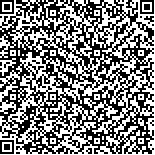| 摘要: |
| 采用静水试验法, 模拟研究了电厂温排水排放导致的海水升温和余氯残留对黑棘鲷(Acanthopagrus schlegelii)存活的影响。试验水温设4 个梯度: 18、22、26、30℃, 余氯设6 个浓度水平:0.025、0.05、0.1、0.2、0.4、0.8 mg/L, 同时以过滤海水为对照组, 每一个水温条件下的余氯浓度均设3 个平行样本, 取黑棘鲷初孵仔鱼进行试验, 试验共进行96 h 观测。试验结果表明, 当水温升高至30℃时, 对仔鱼的存活会产生显著性影响, 24 h 的死亡率为23.4%, 48 h 的死亡率骤升至98%, 而18、22、26℃ 3 组96 h 时死亡率均未超过10%。24 h 时4 种水温条件下余氯对黑棘鲷仔鱼的LC50 值分别为0.816、0.460、0.433、0.319 mg/L, 可见水温升高会增强余氯对仔鱼的致死效应, 而随着时间延长, 余氯对仔鱼的LC50 值进一步降低, 至96 h, 其值分别为0.242、0.211、0.140、<0.025 mg/L。广义相加模型分析结果显示, 水温由26℃升至30℃时, 或当余氯浓度高于0.2 mg/L 时, 或曝露时间超过48 h, 均会对黑棘鲷初孵仔鱼产生明显致死效应, 双因素方差分析结果显示, 水温、余氯、曝露时间对仔鱼死亡率具有显著性影响(P< 0.05), 且水温-余氯、水温-曝露时间之间具有显著性交互作用(P< 0.05)。 |
| 关键词: 黑棘鲷(Acanthopagrus schlegelii) 余氯 水温 广义相加模型 双因素方差分析 |
| DOI: |
| 分类号: |
| 基金项目:国家重点基础研究发展计划课题(2010CB429005); 中央级公益性科研院所基本科研业务费专项资金资助项目(中国水产科学研究院东海水产研究所, 2007M02) |
|
| Effects of temperature and residual chlorine on the survival of black porgy Acanthopagrus schlegelii larvae |
|
|
| Abstract: |
| The lenitic test method was used to analyze the effects of increased water temperature and residual chlorine resulted from power plants thermal drainage on the survival of Acanthopagrus schlegelii larvae. Four different water temperatures were set as 18, 22, 26 and 30℃, and six different gradients of residual chlorine concentration were set as 0.025, 0.05, 0.1, 0.2, 0.4 and 0.8 mg/L in triplicate. At the same time, filtered seawater was taken as the control. The sac-fry stage larvae were used and test was terminated at 96 h. The bioassay results showed that there is a significant lethal effect on black porgy larvae at 30℃. The lethal rate was 23.4% at 24 h and fast arose to 98% at 48 h. Whereas the lethal rate of group at 18, 22 and 26℃ were all lower than 10%. The half maximal effective concentration after exposure for 24 h (24 h-LC50) at 18, 22, 26 and 30℃ were 0.816, 0.460, 0.433 and 0.319 mg/L respectively. The data indicated temperature can enhance the lethal effect of residual chlorine on the survival of black porgy larvae, and LC50 value significantly decreased with increased time. The half maximal effective concentration after exposure for 96 h (96 h-LC50) at 18, 22,26 and 30℃ were 0.242, 0.211, 0.140 and lower than 0.025 mg/L respectively. We used generalized additive model to analysis the relation between lethal rate and factors including temperature, residual chlorine, exposure time. The results showed that the toxicity significantly enhanced when the temperature was higher than 26℃, or the concentration of residual chlorine was higher than 0.2 mg/L, or exposure time of larvae to residual chlorine was longer than 48 h. The univariate analysis results indicated that the lethal rate was significantly affected by temperature, residual chlorine and exposure time. Furthermore, there is significant influence between temperature and residual chlorine, as well as residual chlorine and exposure time (P<0.05). |
| Key words: Acanthopagrus schlegelii temperature residual chlorine generalized additive model univariate analysis |
